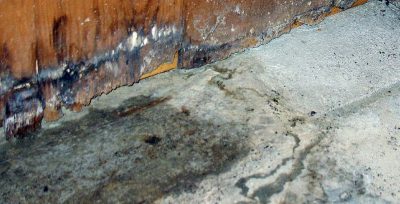What Exactly is Penetrating Damp?
Penetrating damp (also known as lateral damp or water ingress) is more common in older buildings with solid wall construction. Penetration damp is a result of the infiltration of water through the wall from the outside into the interior. Older buildings with defective walls are more prone to penetrating damp, especially when the walls become porous due to degradation which can easily allow water to infiltrate. Buildings with a cavity wall construction that was poorly installed are also susceptible to penetration damp.
Penetrating damp makes your wall unattractive and can eventually end up in expensive repairs such as structural timber rot repairs. It is essential to be aware of penetrating damp signs for you to find a solution as fast as possible.
Rising and Penetrating Damp Prevention and Treatment Services in London
- 01Rising & Penetrating DampRead more
- 02What Is Penetrating DampRead more
- 03What is Rising DampRead more
- 04Causes of Rising DampRead more
- 05Causes Of Penetrating DampRead more
- 06Symptoms of Rising dampRead more
- 07Symptoms of Penetrating DampRead more
- 08Rising Damp vs Penetrating DampRead more
- 09Stop Penetrating DampRead more
- 10Stop Rising DampRead more
- 11What is a Damp Proof CourseRead more
What are the Causes of Penetrating Damp?
Penetrating Damp can occur in buildings with defects such as faulty roof covering, blocked or leaking pipes, defective flashing and pointing, and poorly installed windows. Render, pointing and brickwork can become worse with age, physical damage or frost. If the cases were these issues are not addressed immediately, they can be a continuous source of dampness that can eventually ruin the interior of the property. Older buildings are the most vulnerable to penetrating damp because the materials used have deteriorated over several years.
What are the Symptoms of Penetrating Damp?
It is essential to be aware of what penetrating damp looks like. It can take from weeks to months for the symptoms to appear. Remember that older buildings with solid walls are vulnerable to penetrating damps.
You can tell that your building has a penetrating damp problem when you find damp patches on the walls, the appearance of black mould and stale, damp smell. You can check any potential sources that might be the reason for the penetrating damp problem. You can go outside and inspect if there are missing slates or damaged roof covering. You can check inside as well to see if the plumbing is defective or there are leaking pipes.
Can a Penetrating Damp Problem Cause Serious Damage?
Even if the penetrating damp does not infiltrate through the wall, it can still be quite damaging to your property. If the penetrating damp problem persists for longer periods of time, it can lead to other issues such as dry rot and wet rot, moist plasterwork, elevated heat loss, frost damage, stale smells and undesirable water damage on the property.
What You Can Do If Your Property Has a Penetrating Damp Problem
As soon as you observe the symptoms of penetrating damp, it is a must to do something early to prevent further damage and costly repairs. Look for a reputable company that offers penetrating damp treatments. It is vital that you let experts look at the penetrating damp problem so they can apply the most appropriate solution.
Southern Damp Proofing Services — Your Penetrating Damp Treatment Specialist
Here at Southern Damp Proofing, our experienced team are highly trained to assist you with your penetrating damp problem. We assure you that we can get rid of the damp issue your property is experiencing.
First, we will do a site visit to inspect the issue and identify what is causing the problem. As soon as we find the culprit of the damp problem, the repair is done to the defect to stop moisture from entering. Finally, we will consider what other repairs should be done to get rid of the issue altogether.
Reach Out to Our Penetrating Damp Specialists
To ensure that your property won’t be severely damaged, it is essential that you identify if there is a penetrating damp problem. You can call our specialists now at 01245 678 920 to get the perfect solution for your penetrating damp dilemma.
The surveyors at Southern Damp Proofing Solutions are Property Care Association accredited. Our surveyors are highly qualified and certified to deliver the right solutions for any damp problem that could be damaging your property.
Penetrating Damp FAQs
Can penetrating Damp be Dangerous in Any Way?
Water ingress: What is it?
Penetrating Damp Mold: What is it?
Is mould caused by penetrating damp?
Can I perform DIY solutions for penetrating damp issues?


